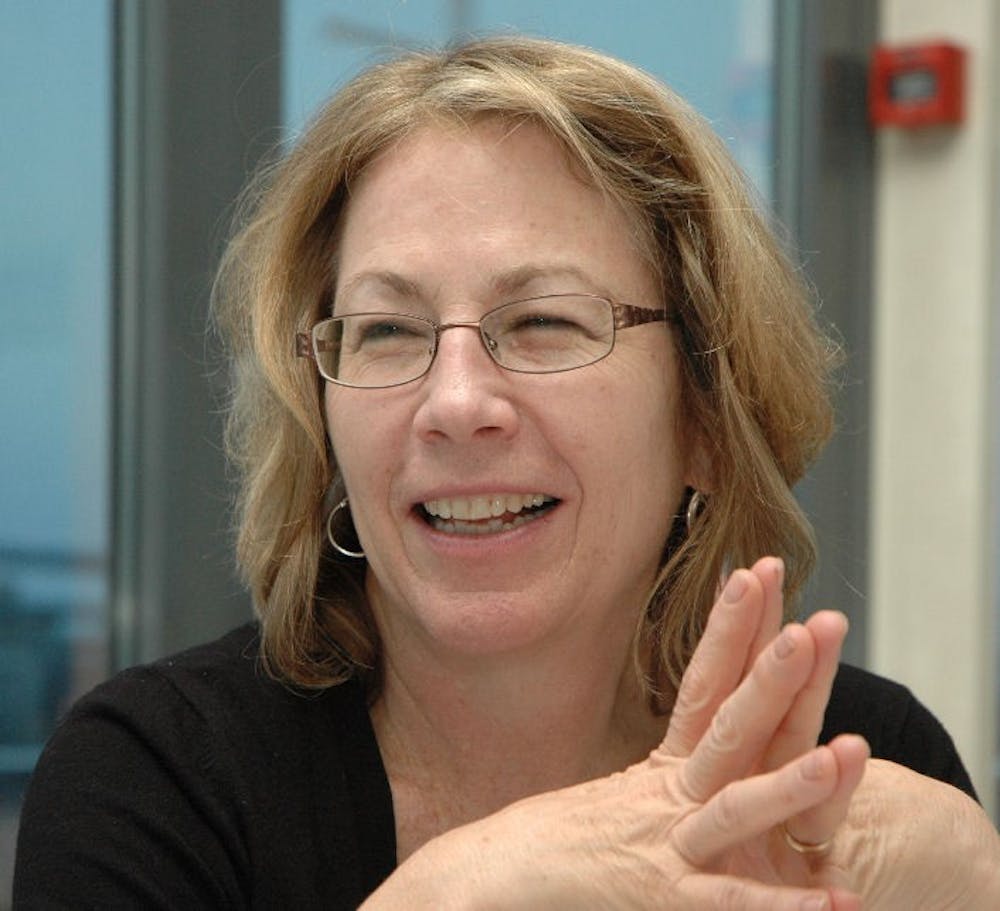Principal investigator Professor Brenda Rapp of the Cognitive Neuroscience Lab on Homewood Campus discussed, her lab’s research, which focuses on word production and comprehension. She described her personal background and her visions for the future of her work.
Rapp, originally from Madrid, Spain, began her scientific career at Hopkins in 1985 as a Ph.D. student in psychology. Rapp’s undergraduate education was at the University of Maryland, where she graduated with a Special Education degree. She had discovered her deep interest in helping children with learning and language disabilities unintentionally during the summer after her senior year of high school.
That summer, she happened to volunteer at the Study Center Foundation, a foundation dedicated to academic help and research for children with learning disabilities in Madrid.
Rapp realized that she loved working with these children, but she knew nothing about the underlying causes of their disabilities. She wanted to know what was really going on inside their heads because she felt that in order to help them improve their reading and spelling, she needed first to understand how these abilities are organized and dictated by the human brain.
In search of these answers, she found herself applying to graduate school at Hopkins. She has worked here ever since, dedicating over thirty years to her research on written and spoken word production. Although Rapp has mainly worked with adults during her research career, she believes that understanding the adult system is essential to helping kids.
Funded by a multi-center grant from the National Institutes of Health, Rapp’s CogNeuro Lab currently collaborates with two other labs, one at Northwestern University and the other at Boston University, to study the brain, specifically its path to recovery after being damaged by strokes that create aphasia or language disorders.
Each lab does something a little different. The lab at Northwestern focuses on sentence comprehension while the lab at Boston strives to understand object perception and recognition. Professor Rapp and her team of researchers primarily investigate dysgraphia, or spelling problems.
Their research involves testing and scanning people who have had strokes that damaged parts of their brain commonly associated with language abilities. The subjects are then trained so that they can gradually overcome as much of their acquired language disorder as possible. After scanning them again, scientists can compare the test results from before and after the training to see what changes in the brain seem to be responsible for the subject’s improvement in spelling.
Rapp explains that one of her most rewarding moments was recently publishing a paper in the journal Brain, in which her lab identified specific parts of the brain that are associated with different components of the spelling process. Previously scientists spoke of the spelling process as a whole, without realizing that many different areas of the brain control separate aspects of an individual’s ability to spell.
The multifarious nature of the spelling process, however, is part of what makes the project Rapp is working on so challenging. Each subject’s stroke affects different areas of the brain, and therefore different aspects of their spelling ability are impaired.
Because of this, Rapp has had to accumulate data from countless stroke cases, studying how information about the cognitive and neural bases of spelling disorders from one subject overlapped with observations and conclusions drawn from a different subject.
Armed with this knowledge, Rapp and her research team can examine which brain areas are most essential in the recovery of spelling abilities for stroke patients.
Does the area vary between individuals? Does it depend on the area of the lesion caused by the stroke? How can we use targeted pharmaceutical or electrical stimulation techniques to treat these specific areas and induce faster and more effective recovery?
These are all relevant questions that Rapp and her lab aim to answer.
Rapp’s ultimate goal is simply to make people’s recovery more effective.
“I hope to come closer to using what we learn to have a clear impact of how rehabilitation and treatment are prescribed,” she said.
One day she wants the data her project has generated to allow stroke patients to receive a more personalized approach to recovery.
She hopes to provide them with a better prognosis so they can plan their lives in the best way possible around the often devastating effects of strokes.
Rapp admits that the scientific aspects of her achievements are exciting, and bringing together decades of research results is personally fulfilling, however, she attributes much of the reward in her research to the study volunteers.
She thinks that they may be able to improve not only their own struggles with language disabilities, but also someone else’s.
“Every successful project is a little success for the patient,” she said. “It is gratifying for those people to know that their volunteered time was worth it.”
Rapp has recently begun including children into her research, coming full circle with her early goal of working with and helping kids, the very same goal that has been motivating her for the past 30 years.





